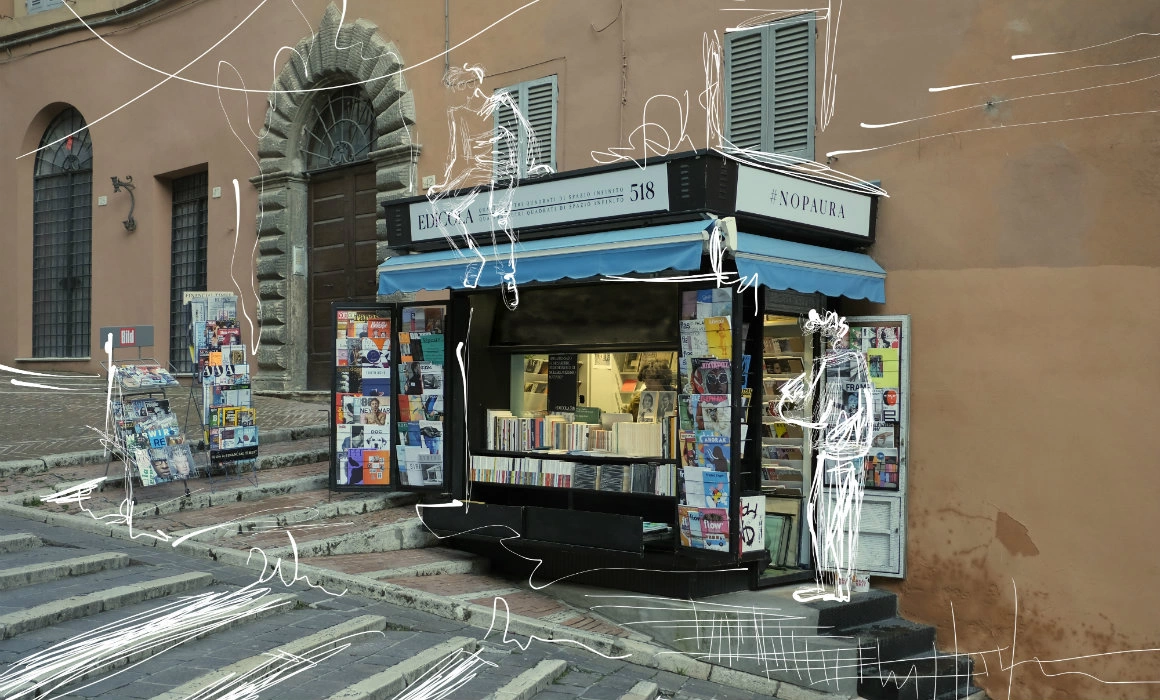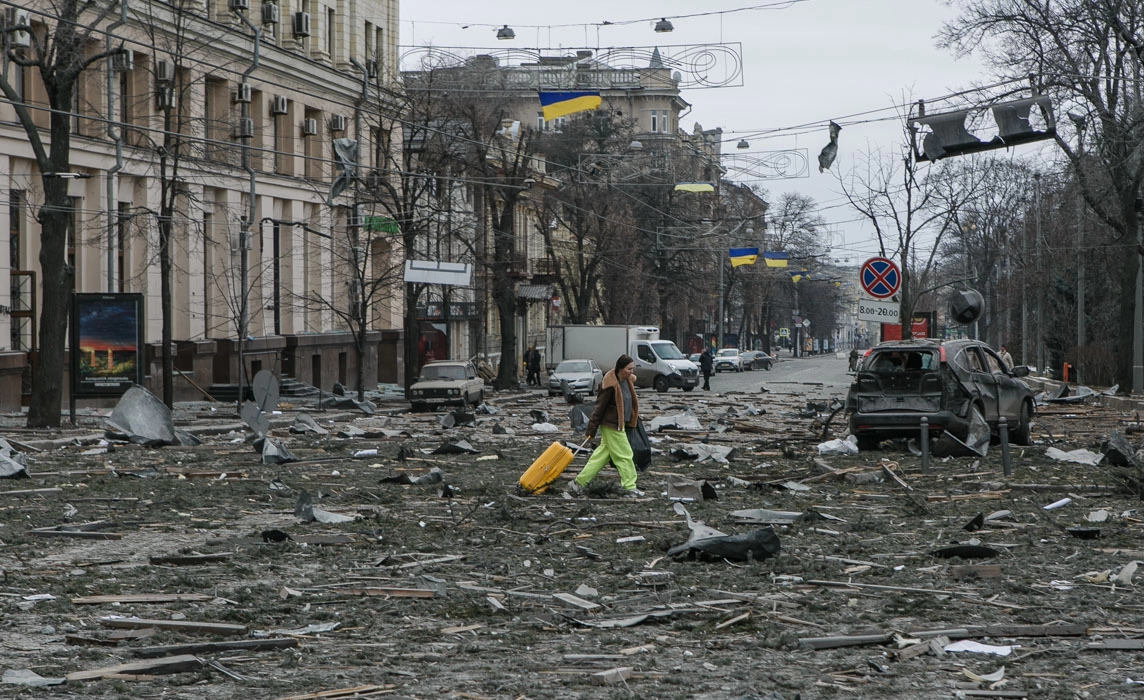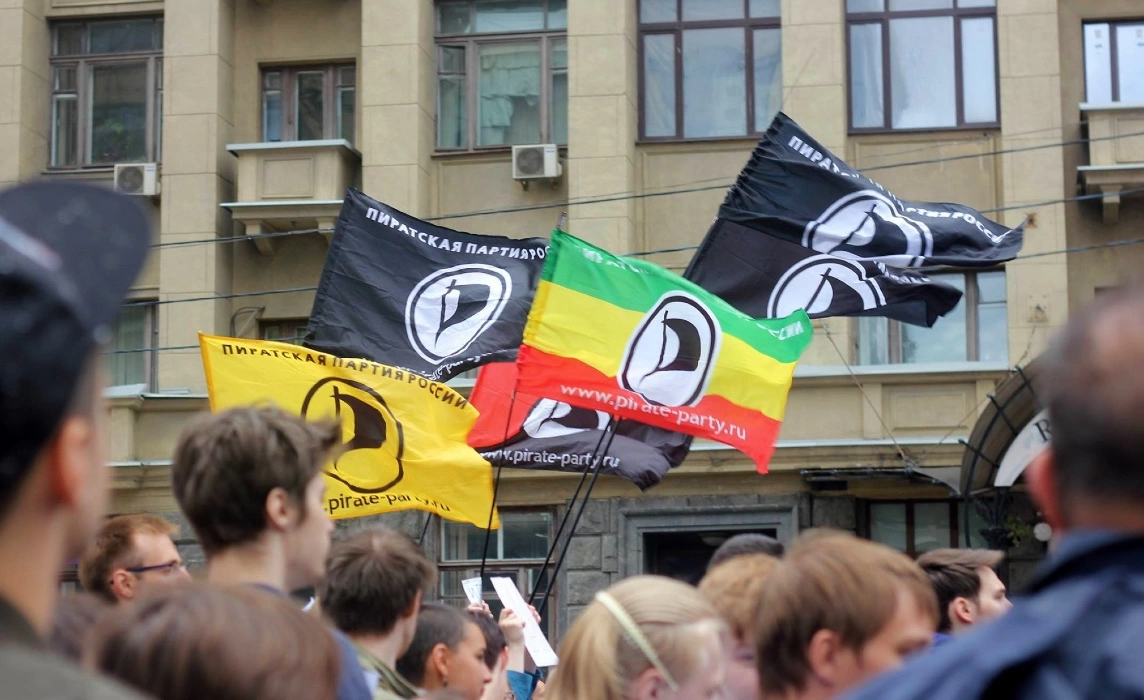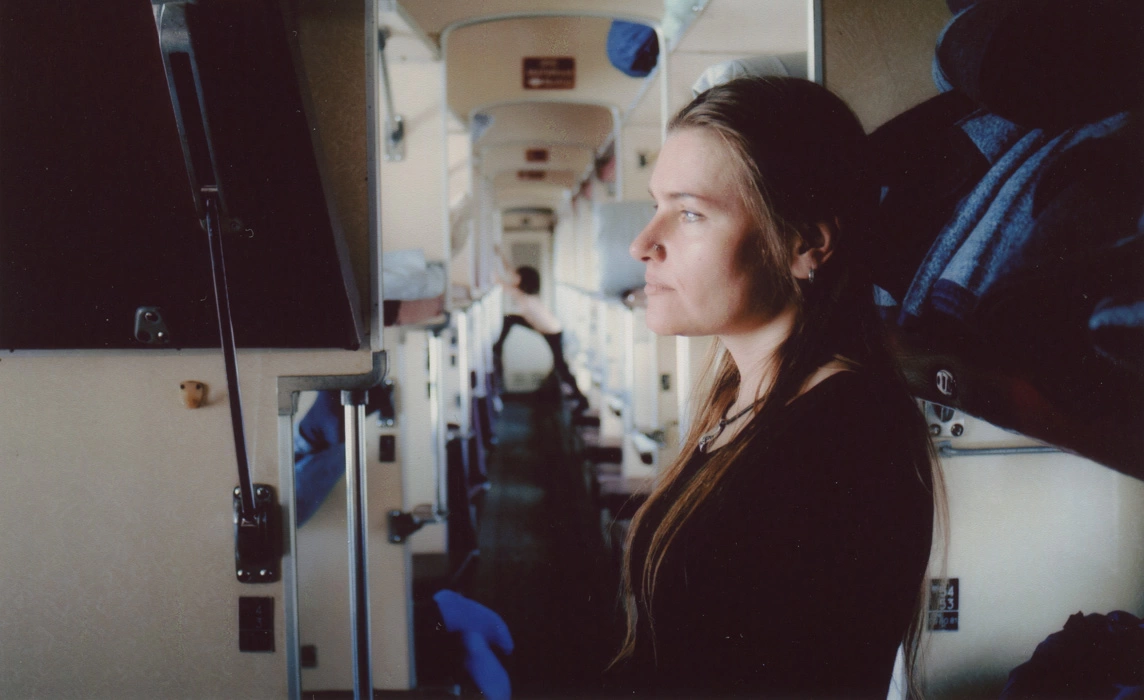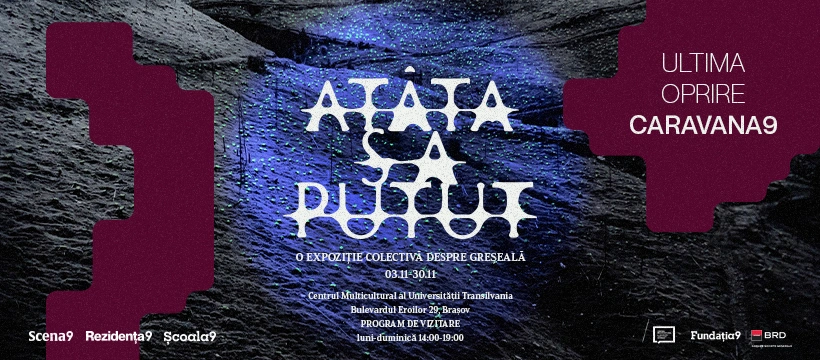Somewhere down some cobbled stairs, overlooking a church under the Italian sky, contemporary art, political manifestos, poetry and publishing meet in one tiny newsstand. Just 4 square meters of infinity, the sign reads. We’re in Perugia, central Italy, and this kiosk seemingly came out of nowhere to shake things up.
Its name is Edicola 518 and you won’t find any nice old man selling you lottery tickets and the latest gossip magazine there. Instead, you’ll find a young writer, art project founder, niche magazine hunter, and quirky anarchist. Edicola 518 (‘edicola’ means newsstand) gets its name from the district’s regional news distributor: there it was, just another number on a map, one of the many anonymous dots, when an employee announced their arrival: “The guys at 518 are here!” They kept the name and made it theirs. Now, in the two years since the opening, those 4 square meters have managed to wake up an entire city with their events and readings, hot debates and articles, magazines, books and state of the art publishing from all around the world, as well as from international art or book fairs. They recently found another piece of infinity in Venice, at local design shop Declare. And they’ve only just begun.
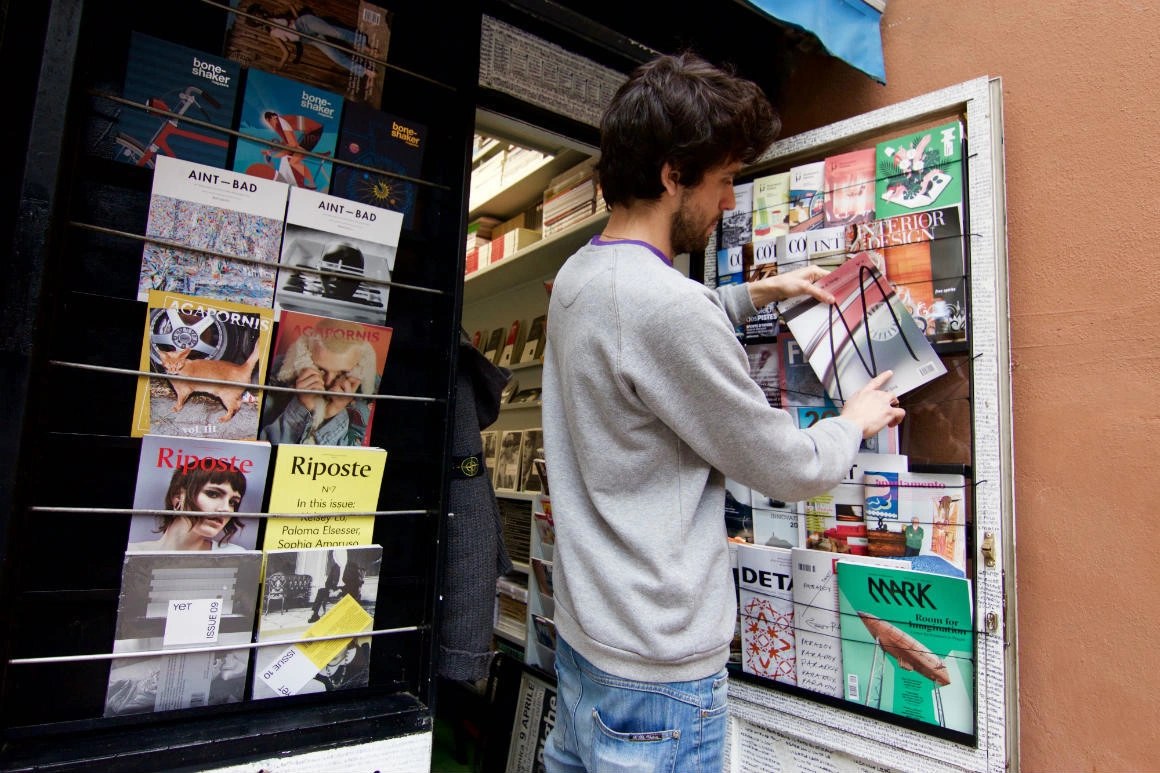
The projects and origins of the groups trace back to 2014 in Milan, Antonio Brizioli tells me. (He’s the founder whom you’ll often find at the newsstand - that is, when he’s not too busy drawing up a master plan to conquer the world). He studied Contemporary Art History there and got involved in an arts project called Isola Art Center – that also acted as a first contemporary art museum and urban resistance stronghold, in a neighbourhood that was about to be demolished for the building of new skyscrapers. It was there that he met Antonio Cipriani, Valentina Montisci (both journalists) and Kristina Borg (Maltese artist). Together, they started working on the idea of “finding something that connects art with the need to tell stories about fieldwork, about working on the boundary between art and publishing.”
After finishing his studies, Antonio returned to Perugia, but with no intentions to stay. Because, after all, a small, numb city, only occasionally animated by moments of unfortunate international fame (such as the Amanda Knox case), or by titles such as Italy’s 'drug capital' isn’t exactly the kind of place that inspires you to pursue a career in contemporary art. Or is it? Antonio started writing a column in the local newspaper "Corriere dell'Umbria”, called it “Emergenze” ("Emergencies”) and took his inspiration from the seemingly overwhelmed media scene.
It didn’t take long to go from there to the first number of the magazine the Milan group had dreamt about and built. Playing on the ambiguity of the word Emergenze, they stuck to that title (which in Italian has a double meaning of "emergency" and "emergent"). "To e-merge means to throw yourself against the current, to take a leap of faith and jump out of the water, to not let yourself get dragged to the bottom. "Emergenza” was vox media - one of those terms the Romans used both with a negative and positive connotation, based on the context. Centuries embedded this word with a negative overtone. We speculate on this forgotten meaning, moving between the opposite poles of this contradiction. "Emergenze” stands for the ambiguity that lies in discovering”, reads the manifesto on their website.
The magazine, started more like an experiment, ended up working both as an outlet for the team’s ideas and as a call for emerging contemporary dynamics, in a city rather focused on promoting its past than on building a culturally relevant present: "I realised that the lack itself of interesting stuff happening here was in fact an opportunity. Because in cities like Milan there is a constant creative boom, there’s tons of stuff happening, lots of rubbish too, but anyway in the end they all kind of boil down to this going here and there, attending events. And it leaves you feeling like people don’t actually get that much out of this experience.” Perugia, on the other hand, with its eclectic mix of small place with vibrant urban touch, the alchemy bursting from a young university town built around antique Etruscan walls and a strong local spirit, reveals itself as the fertile soil for the ideas brought up by the Emergenze group.
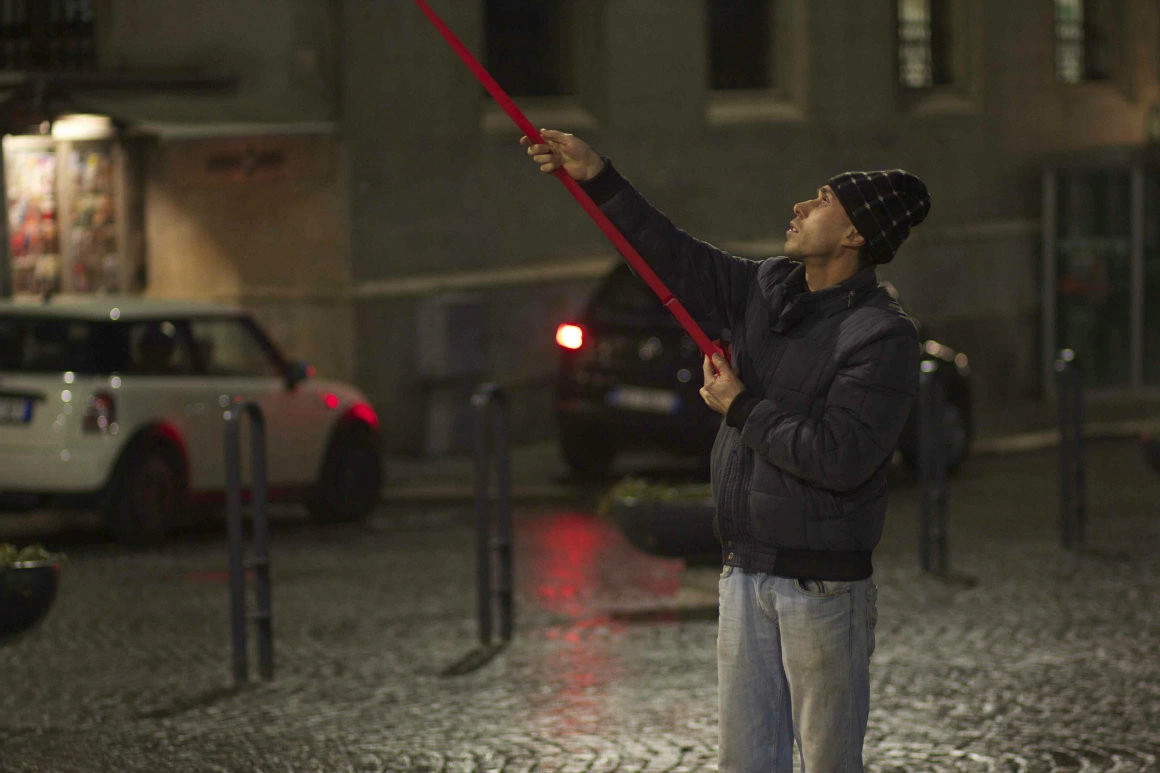
The magazine had a strong debut, doubled by the Riprendere il filo (“Recovering the thread”) art project conceived by artist Kristina Borg and enacted in Milan, San Lauro Cliento, and later on in Perugia: symbolic spots in the city were connected by a red thread, with members of the team having to enter the homes of residents and discuss various issues, solutions for them, ideas and criticism. An operation in which the passerby partook as much as the artist, which ended up rousing debates and interpretations, rounding up appreciations and complaints alike, resisting the harsh winter wind: by the end of it all, though, everybody in town knew about the Emergenze group.
The magazine went on to publish another five editions, each exploring a certain theme and each generated by an open, nomad editorial team, usually in association with various artistic endeavours. Its last edition was also a tongue-in-cheek response to criticism and came out to declare the magazine the world’s first publication with no editorial line. That’s where they stopped it, as they had run out of possible experiments in that format, after a nearly sold-out circulation of 1,000 copies for each edition, with little to no distribution. (Infinity, however, was already shaping up.) In the meantime, the initial group evolved, through both departures and new arrivals, like anything that’s alive and kicking. The additions include Alberto Brizioli (in charge with the photo-video side of the project), Paolo Marchettoni, and Luca Mikolajczak (students, journalists, dreamers).
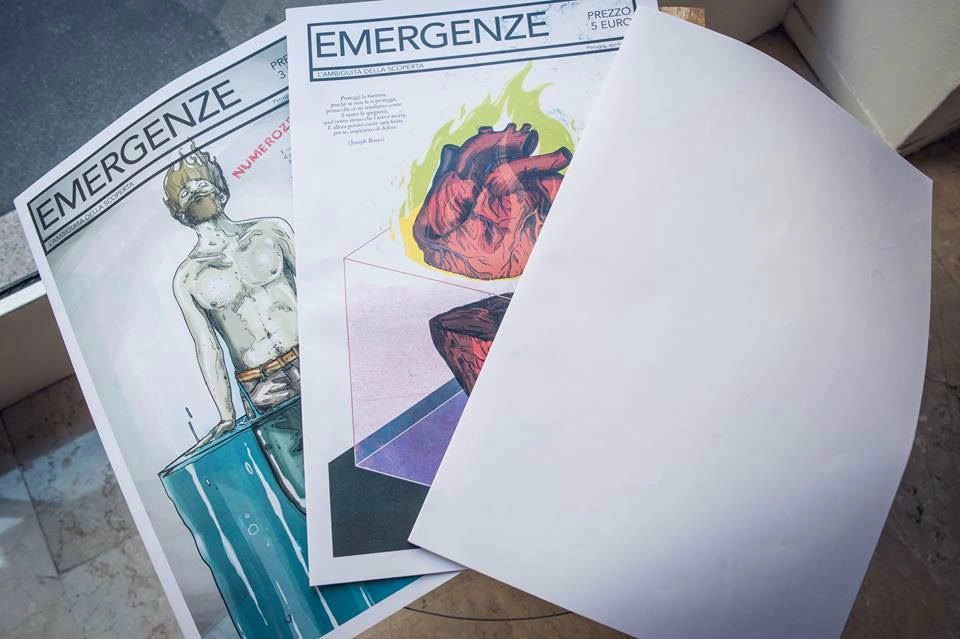
Alright, sure, it’s alive and artistic and idealistic and all - that’s what we all want in a way - but you have to ask where they got the money to do it. Antonio tells me that none of them had to sacrifice personal finances in order for the project to go ahead: the first edition of the magazine had a small financial aid from the Municipality of Perugia, and from there on out, each issue and every project was funded through the previous one – from sales, events, everything created in-house, so that they don’t end up relying on ‘crutches’ and outside interference: "Of course, when we started out we all worked as volunteers, on the other hand, it’s a type of work you do for yourself, so... it’s not like anyone is paying you to invent stuff for yourself, not nowadays anyway.” It really doesn’t even sound half-hard when he puts it like that.
And so, they kept on inventing: June 1, 2016, marked the opening of the self-titled "new revolutionary space at the heart of Perugia, an abandoned kiosk animated by the power of art and poetry, with a selection of the finest Italian and international publishing, where we’ll have guests from all around the world, where we promise to never bore you, but take your ideas and turn them into actions that transcend space and time.”
The very first idea that got turned into action was essentially this: they saw an abandoned newsstand down the stairs, near the church, and had a flash of inspiration – they were actually looking for a space to make their projects happen. And so they talked to the old owner, bought it for little money (after all, there’s not too much of a market for this kind of thing, especially since print has been declared dead), and now all they had to do was figure out what to do with it. They soon found out that having a newsstand implied a long, impersonal chain of random supply, at the end of which - there you were, quietly selling the press and various objects you received, while waiting for your imminent demise. That, of course, made no sense to them. So, just like that, they became Italy’s first and only newsstand that refused to partake in this chain of supply and to sell newspapers, for that matter. Instead, they insisted on finding small suppliers and bringing in some of the most interesting titles the world had to offer, in terms of niche publishing (Luncheon, Migrant, Vestoj, Cook_inc, Elephant, Racquet, Toilet Paper, or the fresh Romanian Kajet, are just some of the examples.) They also insisted on working with art publishing houses and, at the same time keep their given name, in a knowing nod to the very rigid system they were subverting. “You know, it’s not like anyone gives you permission to do these things, you just do them and set a precedent.”
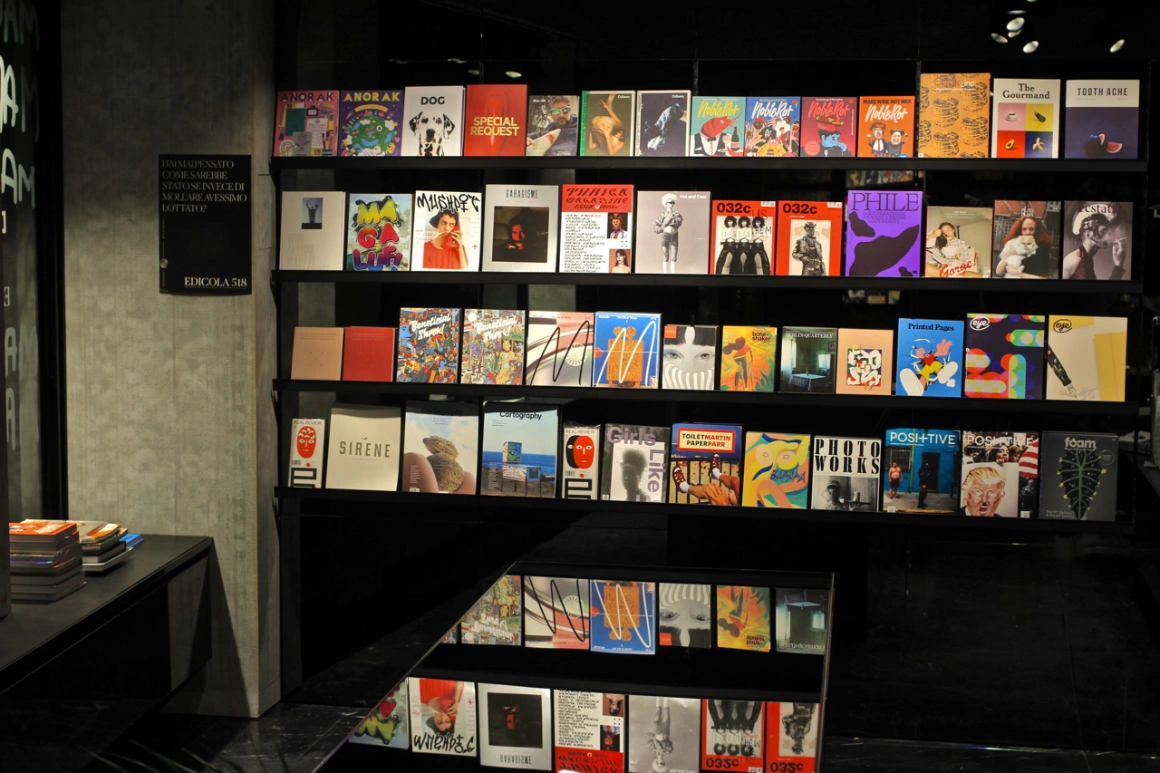
Something along those lines must’ve crossed the mind of Bucharest’s sector 4 mayor last autumn, when he promptly decided not to renew the operating permit for press distributors in the area. He thus gave way to abusive relocations and newsstands getting wrecked. His decision then triggered a general strike of hundreds of newsagents in the capital. The difference is that the precedent he created was totally on the opposite side, as well as opportunity for a painful recap: in 7 years, over 60% of the press selling points in Romania where shut down (going from over 6,500 kiosks in 2010, to almost 3,000 in 2017, according to the numbers obtained by the Gazeta Sporturilor wire service and published by Cătălin Tolontan). With many of the main national newspapers having declared bankruptcy and a market that got off on the wrong foot in the digital race, the newsstands found themselves in a gray area – no longer main providers of information, not a reference point for the residents, and, worse still, an inconvenience in the many real-estate battles for every square meter in Bucharest. Last years strike could’ve been the beginning of a relevant conversation on the current and future state of affairs; it wound up, however, into another subdued truce.
It was precisely this kind of conversation that got the Emergenze special brigade involved, as they found themselves saddled with the "rather odd mission of shaking off this image of newsstands as mythological objects that belonged to the past and restoring them back to their initial role of benchmarks in the structure of the city. Because, when we started off, the general opinion was that newsstands were already a thing of the past. Sure, they were cute, but, at the end of the day, who cares, life goes on; and so, the newsagent will have to disappear, just like the carpenter, the cobbler, the blacksmith, and so on. Then, all of a sudden, all this stuff that we made created a moment of confusion and also put a little pressure.” Furthermore, it sparked a political debate that concluded with a national plan called Salva Edicole (Save the Newsstands), including practical measures to be taken, so that the 70,000 newsstands in present-day Italy get another chance. It would seem that you can get pretty far ahead with just four square meters, after all.
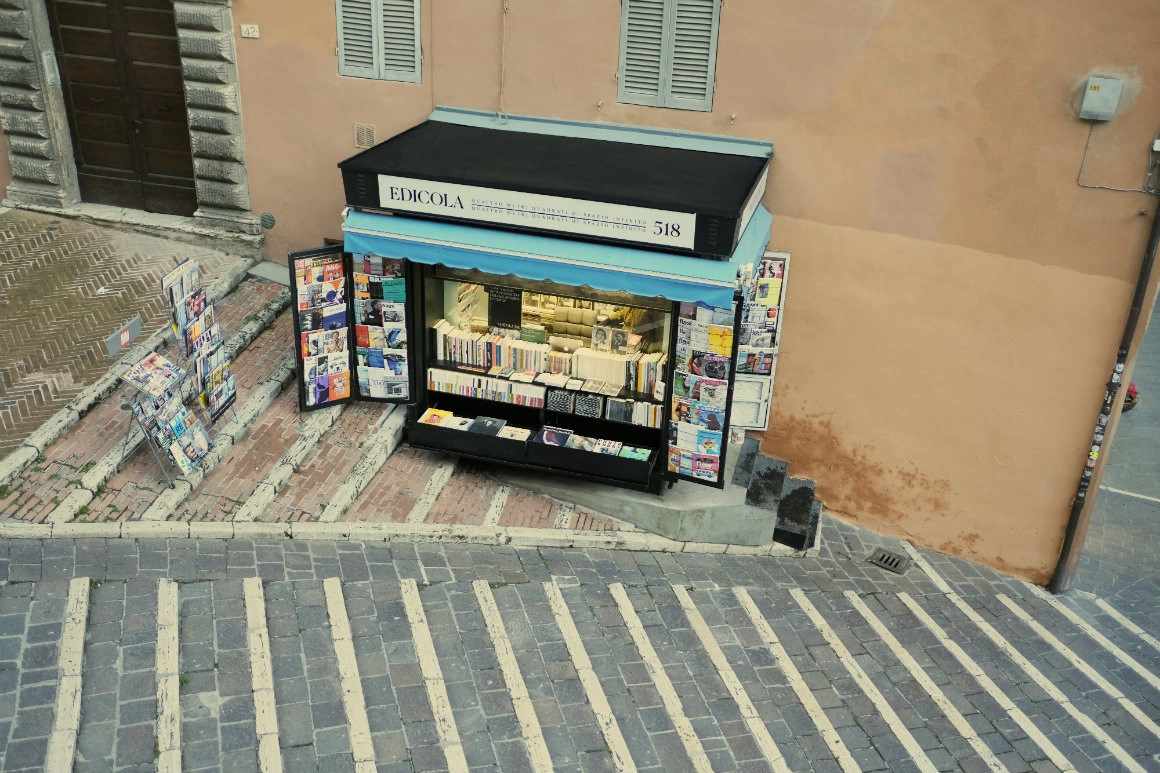
What’s more, the city’s residents are thrilled do have this kiosk reopened, “because perhaps the old lady from the neighbourhood doesn’t quite understand what it is that we’re selling here, but she’s nevertheless happy that the newsstand she knew growing up is once again open, that she can find a reliable person, from whom she can ask a favor every now and then - so the newsstand really has a strong presence in the neighbourhood.” Things are looking good from an artistic point of view, too. “In a way, it represents the ultimate point of this desire of taking art away from a secluded, protected space, and just exposing yourself to a dialogue with, really, anyone: with intellectuals, with folks who have no idea about anything, with those who don’t understand, with those who love you, but also with those who can’t stand you, with critics, with passersby, with speakers of other languages. You are there, offering your view of the world to all of these people, right? So my dream would be to rather build an alternate route for products, but above all, for messages, to go round.”
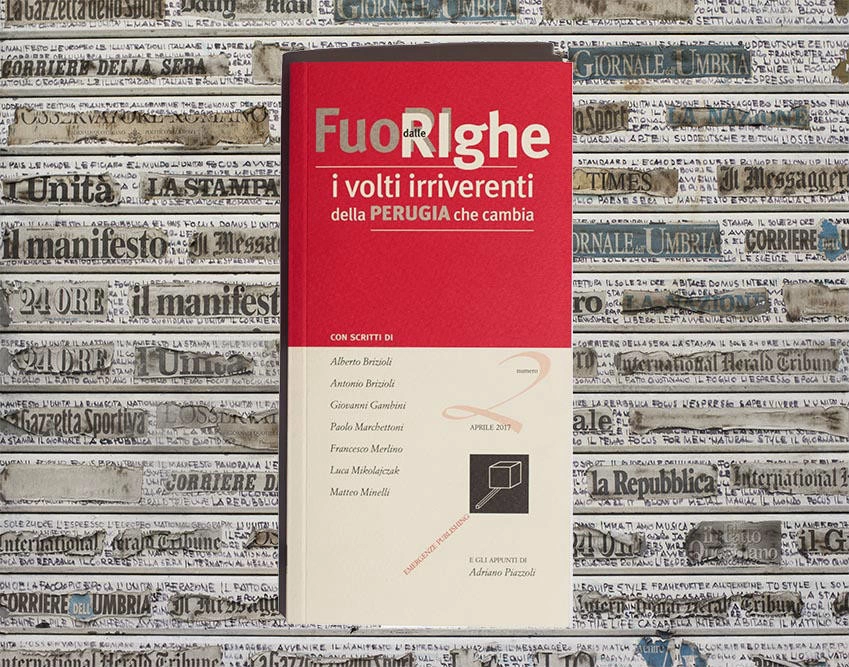
Antonio would also like to get back to publishing their own ideas, especially since the Emergenze project has already generated two books on Perugia: one is an alternative guide for the underground city (both literally and metaphorically) and the other is a collection of the life stories of local characters, who made their mark on this place in one way or another, be it delicately or forcefully, on a social or a personal level - from anthropologists to poets, carpenters, and dreamers alike. Both books were created by the Emergenze team, with the help of editorial design teacher Roberto Gobesso, who came up with the graphic concept and added the finishing touch to these precious publishing gems. For the time being, the group is collecting stories and searching for various scenarios about the lesser-known parts of Umbria, travelling and discovering, while also receiving written pieces and ideas for their newest book on the region. Having had all these experiences, the future of print reveals itself to Antonio in a pretty clear light. "Extinction for everything that’s mass market and poorly made, while quality print will keep on growing with well made editorial and graphic products. Nowadays, especially since we’re experiencing this full blown digital era, people are very fond of an objects tangibility, precisely because there’s this need of clinging to things, things that you can have and touch, and we see this happening in pretty much all areas.”
It goes without saying that their story doesn’t stop here, especially since they don’t want to become just another commercial enterprise, transformed into a self-sufficient, automatic process, but rather want to enjoy what they created, as "a framework, as a means and not as an end.” After all, it’s not by chance that they chose one of Beuys’ recurring elements as a logo (an artist whom Antonio describes as "essential to anyone who wants to tackle the artistic matter not just on an esthetic level, but foremost on an ethical and political one”). A cube lifted by a lever, "in which the cube basically represents society in a way, while the lever – this creative force capable of stimulating it. So it comes as a bit of a metaphor for what he stood for : that in the end, the whole of society represents the true work of art, a collective work in which we can all equally participate as artists in our own ways.” A metaphor and an emergency that a handful of people from a little town in the heart of Italy have decided to take very seriously, in their own artistic way, so as to give that cube a little push. Because, after all, "it’s all a matter of inventing.”
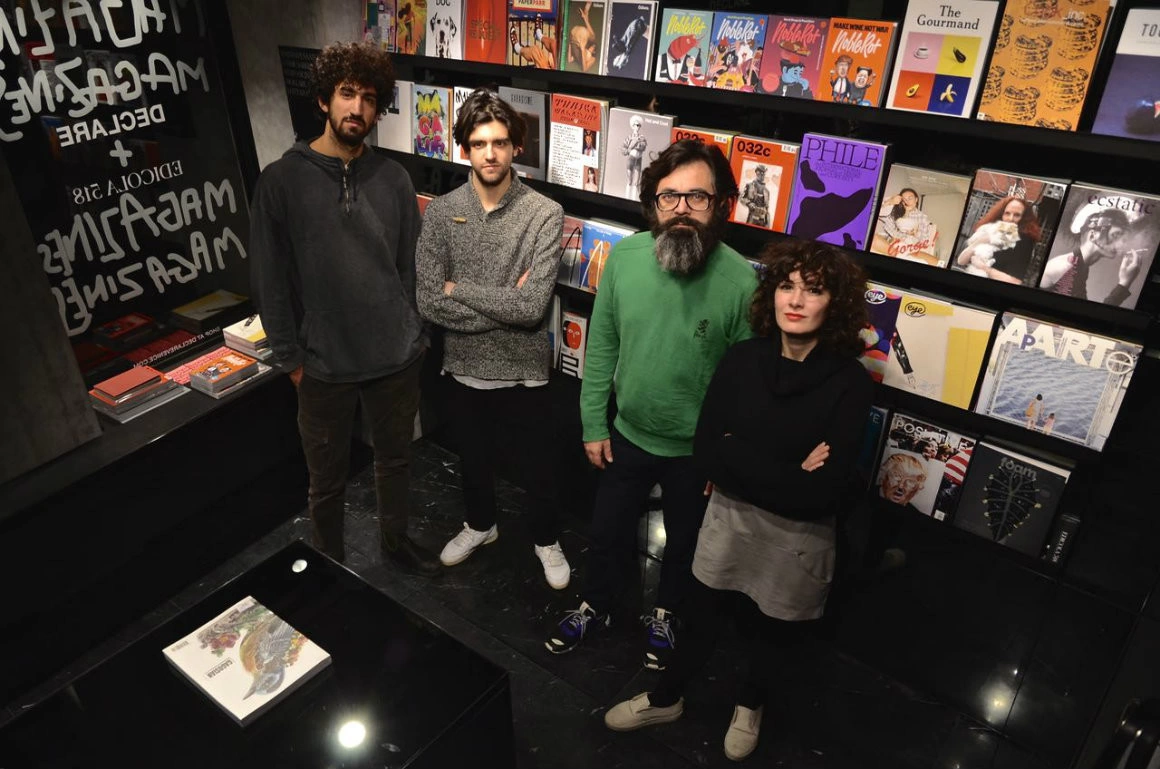
Translated from the Romanian by Emilia Barbu.
For more fresh English-language cultural journalism, brought to you by the new voices of Romania, look here.
